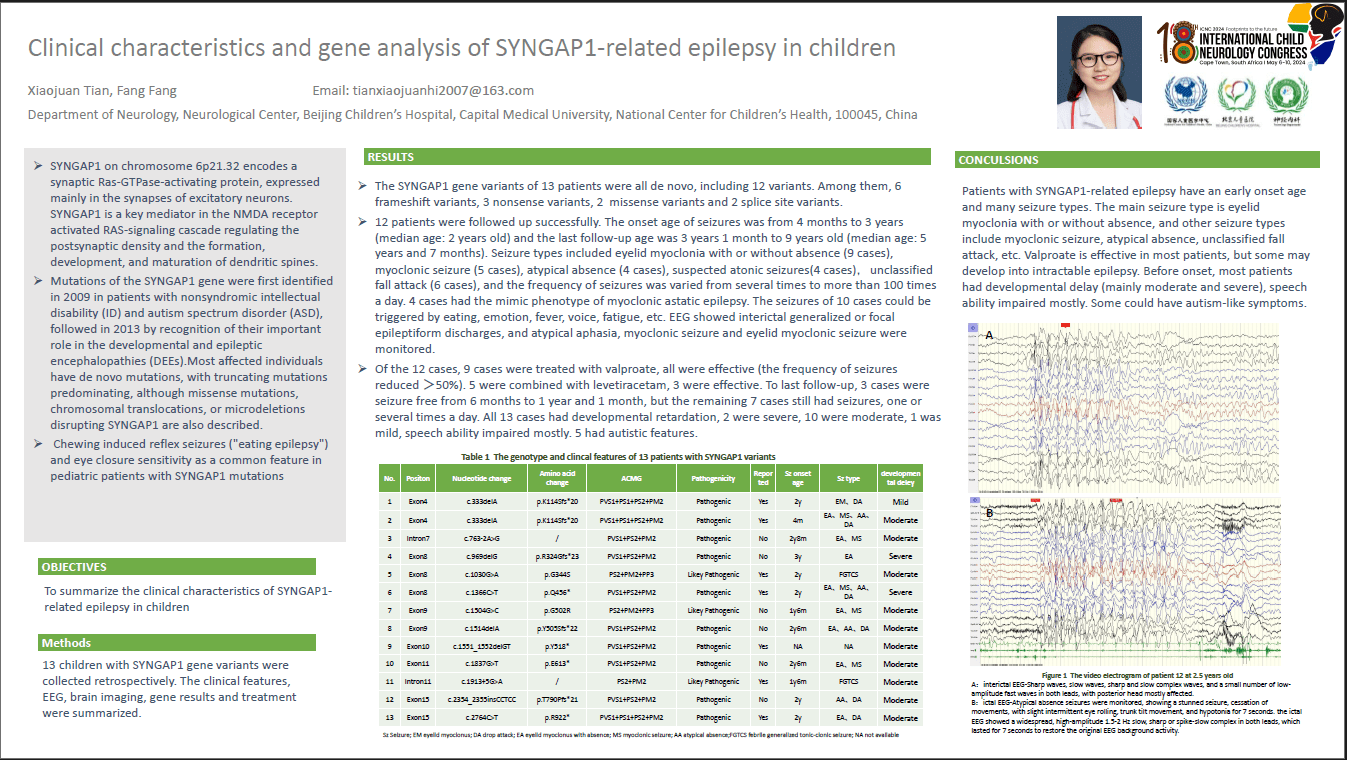Clinical Characteristics And Gene Analysis Of SYNGAP1-Related Epilepsy In Children
To summarize the clinical characteristics of SYNGAP1-related epilepsy in children. 13 patients with SYNGAP1 gene variants diagnosed with epilepsy were collected retrospectively. 12 patients were followed up successfully. The onset age of seizures was from 4 months to 3 years (the median age 2 years old). Seizure types included eyelid myoclonia with or without absence (9 cases), myoclonic seizure (5 cases), atypical absence (4 cases), suspicious atonic seizures(4 cases),unclassified fall attack (6 cases), and the frequency of seizures was varied from several times to more than 100 times a day. 4 cases had the mimic phenotype of myoclonic astatic epilepsy. The seizures of 10 cases could be triggered by eating, emotion, fever, voice, fatigue, etc. Of the 12 cases, 9 cases were added with valproate, all of which were effective (the frequency of seizures reduced >50%). 5 cases were combined with levetiracetam, 3 were effective. All 13 cases had developmental retardation(speech ability impaired mostly). The SYNGAP1 gene variants of 13 patients were all de novo, including 12 variants. 5 were frameshift variants, 3 were nonsense variants, 2 were missense variants and 2 were splice site variants. Patients with SYNGAP1-related epilepsy have an early onset age and many seizure types. The main seizure type is eyelid myoclonia with or without absence, and other seizure types include myoclonic seizure, atypical absence, unclassified fall attack, etc. Valproate is effective in most patients, but seizures in some patients might be intractable. Most patients had developmental delay (mainly moderate and severe), speech ability impaired mostly.
Xiaojuan Tian
Beijing Children’s Hospital, Capital Medical University, National Center for Children’s Health
China
Fang Fang
Beijing Children’s Hospital, Capital Medical University, National Center for Children’s Health
China

Xiaojuan Tian
Beijing Children’s Hospital, Capital Medical University, National Center for Children’s Health
China